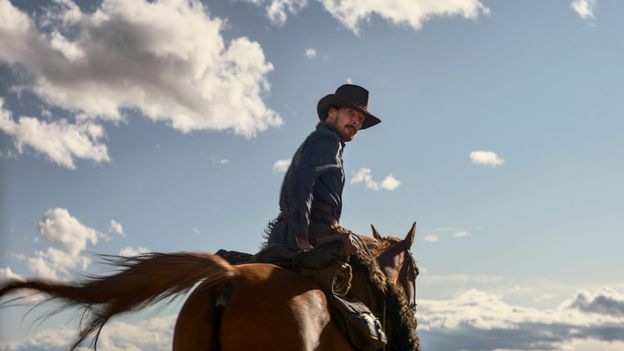The films tackling the toxic cowboy


Eventually, these classical Westerns were broadly replaced by the more morally ambiguous and stylistically adventurous Westerns of the mid-to-late-1960s and 70s, reflecting a period of political unease. Films such as Butch Cassidy and the Sundance Kid and The Wild Bunch, both released in 1969, and Spaghetti Westerns like A Fistful of Dollars (1964), undercut the idealistic vision of the West with their nihilistic antiheroes. These films were subversive in their lack of patriotism but were often intensely misogynistic. There were some Westerns that didn’t play by these rules, like Nicholas Ray’s Johnny Guitar (1954), featuring Joan Crawford as a saloonkeeper who quite literally wears the trousers, and the cross-dressing, queer-coded adventures of Doris Day in Calamity Jane (1953). But for the most part, the Western was both about and authored by men. And while partnerships between men were celebrated, any sexuality was purely subtextual. The gay cowboy is certainly a fetishised figure in pornography and sometimes crosses over into the mainstream in films like Midnight Cowboy (1969), My Own Private Idaho (1991) and, of course, Brokeback Mountain (2005), but these are rare examples, and arguably only Brokeback Mountain is anything close to a real Western.
Taking on the Old West
The emergence of several Westerns over the past decade by women directors might seem like a new phenomenon. But, as Shelley Cobb, associate professor of film at the University of Southampton tells BBC Culture, “Women have been writing and directing Westerns since the beginning of cinema. In the early decades [silent film director] Lois Weber is known to have made two, now lost, and Anita Loos wrote at least one. They are few and far between, but not unheard of.”
One milestone was 1968’s The Belle Starr Story. Lina Wertmüller was brought in at the last minute on this extra-cheesy Spaghetti Western, which she co-directed under a male pseudonym. Nine years later, Wertmüller would become the first woman to be nominated for the best director Academy Award for Seven Beauties. But The Belle Starr Story was hardly a feminist triumph, with its dubious sexual politics and sleazy soft-porn aesthetic. It wasn’t until 1993 that another female director would venture out into the Wild West, this time much more boldly. Maggie Greenwald’s The Ballad of Little Jo tells the story of Josephine Monaghan (Suzy Amis), who is driven out of her home for having a baby out of wedlock and forced to make her own way in an unforgiving world. After she escapes being sexually assaulted, she swaps her dress for men’s clothes, cuts her hair and takes on the masculine persona of “Jo”. Unlike Calamity Jane, whose cross-dressing is an amusing eccentricity that she eventually abandons to get married, Josephine lives as Jo until their dying day. Unfortunately, perhaps because of its radical presentation of gender nonconformity as empowering, The Ballad of Little Jo didn’t have a major impact on culture.








